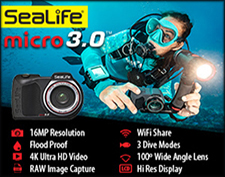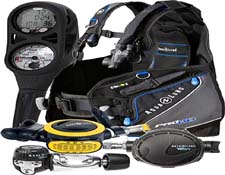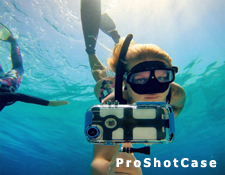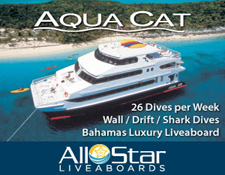

|


|
 |
 |
 |
 |
 |
 |
 |
 |



|
Indonesia lies in the middle of the large marine Indo-Pacific basin. This region extends from the Indian Ocean waters off East Africa all the way to the Hawaiian and Marquises Islands in the East South Pacific. The central area, the waters around the Indonesian and Philippine Islands, is the lest well-known, and much scientific work still needs to be done. In tropical waters, where the temperature and salinity are right, corals seem to "blossom" into gardens, with an amazing variety of forms and colors. Growing corals form reefs, functioning as homes for whole communities of marine life, they also provide nourishment and nurseries for thousands of fish, shellfish, sponges, crayfish and marine plants, while protecting shorelines and creating islands in the process. Whether scuba diving (snorkeling) or deep-diving with breathing equipment, or exploring a reef it is an unforgettable experience. Indonesia's smaller islands are often surrounded by reefs, and many are inaccessible and still undeveloped as far as marine tourism is concerned. The single exception is Pulau Putri in the Thousand Islands, northwest of Jakarta. Other good places: Pulau Peucang and Panaitan off Java's westernmost peninsula in the Ujung Kulon Reserve; coral reefs off the Tangkoko Batuangus Reserve in North Sulawesi; Pulau Kasa near Ambon in Maluku, off the Bali Barat Reserve, in Bali. The Riau archipelago also offers some excitement to divers of a different kind: coral reefs are here combined with the interest of exploring sunken ships and wrecks from World War II. The Riau Archipelago The wrecks which dot the Riau waters, so close to Singapore, are strictly World War II vintage, but they still have an air of mystery. Many were sunk by the Japanese in 1941. Riau is easily accessible by boat from Singapore, from Pekanbaru in SUMATRA or from Pontianak in West Kalimantan. Good beaches and coral can be found near Bintan island, but for divers and coral enthusiasts lor historians, archaeologists or anthropologists, for that matter) there are also endless opportunities to explore the whole Riau archipelago. The islands are small and close to one another, and the wrecks are usually in shallow waters. Island hopping is easy and inexpensive. Boats in Tanjung Pinang are easily available. Pulau Peucong and Pulau Panaitan Both of these sizeable islands are part of the Ujung Kulon nature reserve, and lie just off Java's western end. Peucang has two rest houses, a permit to enter the reserve and rest house accommodation must be obtained at the Nature Conservation Directorate's Head Office in Bogor, or the local office in Labuan. Both islands are reached via Labuan, a town on Java's west coast where there are fishing boats. It's wise to make firm arrangements for return trips at the same time, and to make some allowances for bad weather. No food is available on the island, but the reserve wardens on Peucang (in radio communication with the Nature Conservation office in Labuan) will provide visitors with water, bedding, cooking facilities, and guides. There is good snorkeling and diving all the way around Peucang, with many ledges to explore on the northern reef. More spectacular are the "under water cliffs" of Tanjung Layar where the new and old lighthouses are perched on. Tanjung Layar is only a short boat ride from Peucang and well worth the trip. Spear fishing is not permitted within the reserve. Panaitan Island is uninhabited. Day trips to the southern beaches, about 1 hour from Peucang are recommended. Panaitan has extensive reef platforms, particularly attractive to explore on foot at low air pasang tides. Kepulauan Seribu Kepulauan Seribu or the Thousand Islands is a group of small Islands scattered in the Bay of Jakarta. Actually a total of 110 islands, they are within easy reach from Jakarta by boat or chartered aircraft. Several islands have been developed as tourist resorts or for recreational purposes, where there are bird and marine sanctuaries. The northern part of these islands have been zoned as a national marine park to preserve its underwater resources and beauty. About 90 km from Jakarta is the Pulau Putri, Pulau Pelangi, Pulau Melintang, Petondan which have upmarket accommodation, restaurants, a dive shop and boats for hire. Nearby, the islands of Melinjo, Papa Theo and Sepa have been developed for divers and budget tourists. Transport is available by private speedboats, inter - island ferries or charter flights which land on a grassy strip on Pulau Panjang. The scenery among so many green islands as well as the coral is beautiful. Bookings can be made with Pulau Putri Paradise in the Setia budi building 1, Jl. H.R. Rasuna Said. There are also other agencies which offer sailing and diving tours. Bali Good skin diving areas among the reefs are off the coast of West Bali and those near Padangbai in eastern Bali, and at Nusa Lembongan on Nusa Penida, the large island off Bali's southeastern shores. There is also a wreck, that of the S.S. Liberty, only 40 metres oh the beach at Tulamben, near Kubu. Fish sheltering in the wreck make them so tame that they will flock to divers. Komodo Komodo is unique because it offers two totally different marine environments. In the north we experience the warm clear waters that flow from the Flores and Banda seas. Typical of most tropical locations throughout the world. The hard coral reefs are extensive and in pristine condition. To the south, we encounter cooler waters that flow from deep in the Indian Ocean. It is not unusual to encounter whales, whale sharks, mantas, sunfish and other planktonic feeders during dives on the southern sites. Upwelling, caused by deep ocean currents colliding with the continental shelf force an endless supply of planktonic food towards the surface resulting in a rich coral gardens and an exceptional quantity of marine life. The confluence of these two distinct marine ecospheres is responsible for the remarkable diversity found in the waters of Komodo. The waters that surround the island are turbulent and teeming with unparalleled marine life. A marine reserve, it is largely undocumented and remains largely unexplored. During our last voyage to Komodo we discovered several additional world class dive sites which were added to our list of many. The dives boasted schooling hammerheads and large schools of pelagic fish. North Sulawesi Within easy reach from Manado, North Sulawesi, are good beaches and coral reefs, and plenty of speedboats or sailboats for hire. Rent a boat to go to the nature reserve of Tangkoko Batuangus. The corals are exceptional and accommodation can be found in Batu Putih village. Beach landings are not uniformly easy, depending on the time of the year. The Directorate General of Forest Protection and Nature Conservation (PHPA) has an office in Manado. A permit is necessary to enter the Tangkoko Dua Saudara Nature Reserve. The coral reefs which ring the islands of Bunaken are among the most spectacular in Indonesia and have been rated by internationally experienced divers as on a par with some of the great reefs of the world. The marine population is among the densest of Indonesia and is of unequalled variety. Along the dramatic drop-offs, riddled with grottos, fissures and arches, downward visibility extends to 30 metres or more and the contours of the reef formations offer limitless diving opportunities for snorkels and scuba enthusiasts. The islands can be reached within half an hour by motorized outrigger from Malalayang Beach, the jump-off point south of Manado. Malalayang Beach has a dive-master with licenses from both the Indonesian and Sub aquatic Sport Association (POSSI) and the Paris-based Confederation Mondiale des Activities Subaquatiques (CMAS). Scuba equipment can be hired there, but it is advisable to bring along personal items such as depth gauges and decompression tables. Both are of particular importance, as there is a decompression chamber in Manado. Maluku Ambon has to be considered from the marine enthusiast's point of view, more as a jumping off point than as a destination, since it is accessible by air and lies in the heart of many interesting island groups. For the adventurous and the self sufficient, the underwater islands of Maluku are magnificent. There are about a thousand island islands in the region, and most have excellent beaches, reefs and seascapes, almost anywhere less than a day's journey away from the population centers. The snorkeling is superb. Boats easily available for hire. Pulau Pombo and Pulau Kasa are two small island-marine reserves near Ambon. Best time of the year is from September to March. Spells of rough weather can be expected between April and July. A word of caution is necessary: some corals are very fragile and break under flippers. Some sting badly, like the yellow-tipped fire coral. On sandy reef platforms, watch out for the long back spines of the sea urchins. Several small islands in this archipelago are still uninhabited. Banda Neira Southeast of the islands of Maluku is the small group of islands of Banda, the original nutmeg island. Banda Neira offers crystal clear water, full of coral gardens and tropical fish. There is a small hotel where diving gear is available. The island of Banda Neira is seeped in history, starting from 1312 when the first Portuguese arrived on its shores, followed by the English and the Dutch, all eater for the golden nutmeg trade. Some of the remnants of this period still remain. Banda Neira is an hour's flight from Ambon. Ichthyology Indonesia is rich in ornamental fish species, which are exported to the United States, Japan and Europe. Among these beautiful marine aquarium fish species are the Amphiprion, the Dascyllus, the red colored Labrida and the Gorisaygula found plenty in the waters around the Bali Strait. The Balistoides niger, is found in abundance in North Sulawesi. Apart from fish, the waters around many islands, especially in the more virgin areas in the eastern parts of the archipelago, offer a rich variety of conches and shells and one of the world's most beautiful conches, the so called "Glory of the Sea". In waters around nature reserves, however, the collecting of fish, shells and other objects of marine life is prohibited. Surfing Indonesia is ideal for surfing all year round. Some areas are the best by strong shore hugging currents which, while not bothering the experienced surfer, make them unsuitable for beginners and swimmers. Java's southern coast is longer than California's Pacific coastline. Long sandy beaches separated by rocky headlands or occasional peninsulas are plentiful where conditions are excellent for surfing. A good place for beginners, but still satisfactory for the more advanced is the beach near Batu Keras, west of the nature reserve and local resort of Pangandaran. Small but steady right-handers roll in over a sandy bottom. Boogie boards are good fun here too. Batu Keras is about an hour's drive west of Pangandaran village, where there is ample accommodation. Avoid the bay between Batu Keras and the Pangandaran peninsula, as strong currents run parallel to the shore except in the sheltered cove near the reserve itself. Another area rapidly becoming increasingly popular with surfers is at Pelabuhan Ratu, a three hour drive from either Jakarta or Bandung, situated on Java's southern coast, the Indian Ocean. A few miles from this fisherman's port going west on a scenic coastal road with wild beauty on your right and the impressive ocean waves on your left, you will notice all kinds of adequate facilities. But the best place to go to is beyond the 4 star Samudra Beach Hotel, towards the village of Cisolok where beach surrounding are lovely, distinctly tropical and where the ocean is at best. Its relative proximity from Jakarta or Bandung has certainly been a major factor which gave rise to general growth in this area where prices are still very moderate and its seafood excellent. The western beaches of the Blambangan peninsula, Java's easternmost extension have also attracted the attention of surfers. The whole peninsula is a nature reserve, known for its sea turtle nesting beaches and its good waves but little else. Most surfers reach it by boat from Bali. With its greater share of the tourist traffic, especially from Australia, the needs of sporting tourists are more obviously catered to in Bali than elsewhere in Indonesia. Good places for surfing in the west monsoon (October to March) are 0 Dua and Sanur Between April and September, Kuta Beach is better, and for advanced and serious practitioners of the art there is also Ulu Watu on the west coast of the peninsula. |
| DiveGuide.com Scuba Diving Vacations & Dive Holidays - Book direct dive travel with scuba diving operators, resorts, dive liveaboard yachts and dive travel representatives worldwide. We provide free scuba diving information for the traveling diver on vacation and holiday in and to scuba diver destinations around the world. |












|